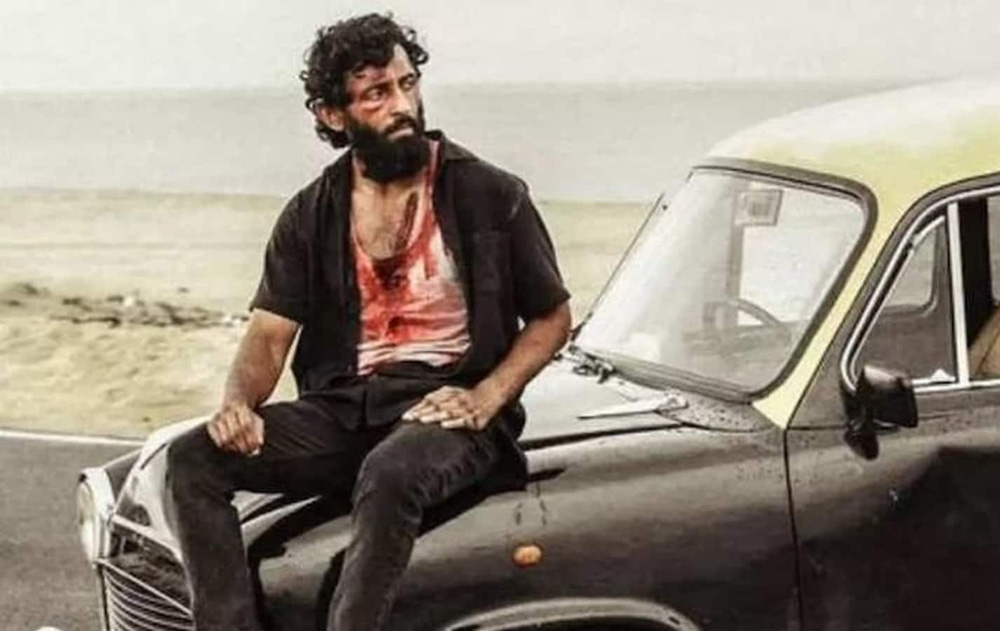Vengeance, redemption, and catharsis are the common themes in any revenge drama. For good directors, these themes are devices to explore the psychological and philosophical conflict within their characters. Still, these themes become a mere storytelling device for lesser directors who ignore the characters to skip on to the narrative. New Tamil director in the town, Arun Matheswaran, tries to become a good director with his debut film “Rocky;” but lacking an exploration of the psychological and philosophical conflict within it, it sadly becomes but a mediocre revenge drama.
The problem arises mainly from the writing. In making a narrative film, the primary thing is to create drama steadily to bring the final blow in the climax. In the case of “Rocky,” Matheswaran starts the film ambitiously by building drama slowly with his characters’ initial establishment with some great cinematic shots. Cinematographer Shreyaas Krishna creates the perfect landscape for the characters to grow with his abstract framings with extremely wide shots. Also, natural lighting and long takes create a particular attachment for us with the characters in this detached, almost apocalyptic cinematic world around them. Nagooran Ramachandran’s editing distorts space and time. This creates a similarly dramatic effect on the narrative.
‘Rocky’ Has a High Production Value
Three questions always arise in movies, and the film should have those answers. What is the point of making it? Why is it important? And how it is going to be achieved? The third question is more technical in terms. In that term, “Rocky” fascinatingly has the correct answers with its astounding visual aesthetic never seen before in modern Indian films by me. But when the time comes for the other two questions, the film starts to falter.

As I mentioned earlier, the cinematography and editing create a dramatic ambiance for the characters to develop. However, it then becomes necessary for the writer to make that development happen. As the film progress, Matheswaran’s screenplay fails to bring change in his characters. Individual scenes create anticipation to explore his character development, but they die out too soon, often followed by weak scenes. As a result, blank spaces are created in the screenplay, and the overall rhythm of the film fails to get in sync.
Matheswaran tries to be clever to fill in the blanks with the use of violence. Subsequently, some extraordinarily-choreographed action sequences (one scene even reminds me of the famous one-take corridor fight sequence from the classic Korean film “Oldboy”) are used throughout the movie. Indeed, they make some great high points, but they can’t save the film from its lack of cohesiveness created by weak writing.
Character Development that Often Drops Off with Weaker Scenes
In my opinion, the problem starts from the point the film brings vengeance into the narrative. Before that point, the film is going smooth with its visual aesthetic, and the characters’ slow but steady development builds the anticipation. For example, at the beginning of the film, it has all the answers to the questions I mentioned earlier. What is the point of the film? A man released from prison haunted by his past and seeks redemption for his past sins. Why is it important? He tries to start anew and get a sense of belonging somewhere in this detached world. How it is going to be achieved? The initial extreme wide shots that make the subject small on the screen create a sense of detachment in the isolated landscapes. Also, tracking shots bring us along with his quest for redemption.
But as vengeance is introduced into the film, the smoothness is interrupted, and the film falls into disarray. Matheswaran emphasizes revenge, yet the stakes of revenge are clichéd and predictable. The backstory where this vicious cycle of vengeance started is loose and lacks strong motivation. Thus when the question of what and why comes, it doesn’t give any concrete answers. Instead, it roams around and around, without the foggiest of ideas of where it will end. As a result, after the showdown, the resolution or catharsis seems lessened and discontent.
Arun Matheswaran is a potential good director. He reminds me of the films of one of my favourite Japanese auteurs, Takeshi Kitano. One can find the same moody ambiance and contemplative style of “Hana-bi” or “Sonatine” in “Rocky.” But it is also evident that “Hana-bi” or “Sonatine” have the depth in their respective characters, which “Rocky” largely misses out due to its lackluster writing. As a debutant, Matheswaran has a long way to go. I hope he will rectify his writing capabilities and use his full potential in future projects.
Currently, “Rocky” is not available for streaming.
Support the Site: Consider becoming a sponsor to unlock exclusive, member-only content and help support The Movie Buff!